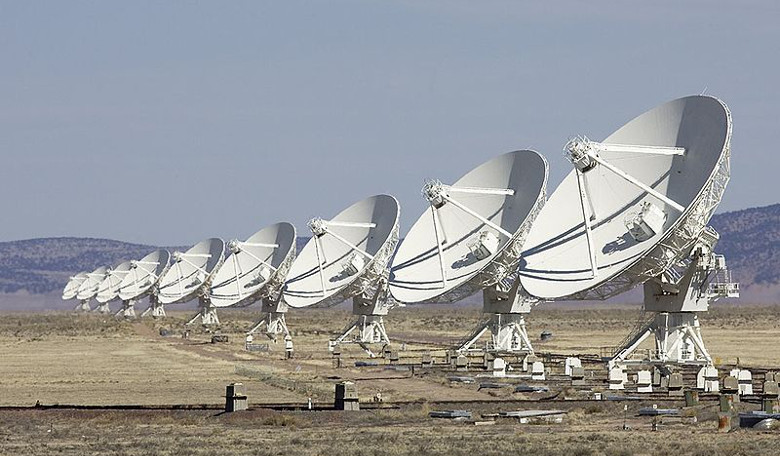The source of a rare millisecond-long "fast radio burst” (FRBs) that has perplexed astronomers since they were first detected nearly 10 years ago has finally been pinpointed, thus ruling out several suggested explanations for the origin of FRBs.
These mysterious bursts were originally thought to have come from within the Milky Way or at least from cosmic neighbours nearby due to their high energy, however their sporadic nature was something of a conundrum.
Although there are now 18 known FRBs, one FRB named FRB 121102, discovered in November 2012 at the Arecibo Observatory in Puerto Rico, has recurred numerous times. By switching from a single dish telescope to the Karl G. Jansky Very Large Array (VLA), a multi-antenna radio telescope system with the ability to see fine detail, astronomers were able to precisely determine the object's location in the sky.
"For a long time, we came up empty, then got a string of bursts that gave us exactly what we needed," said Casey Law, of the University of California at Berkeley. "We now know that this particular burst comes from a dwarf galaxy more than three billion light-years from Earth," added Shami Chatterjee, of Cornell University. "That simple fact is a huge advance in our understanding of these events.”
So what could be causing these baffling bursts? Top of the list is a neutron star or a magnetar – a type of neutron star with an extremely powerful magnetic field – or an active nucleus in the host galaxy. In this situation jets of material emitted from the region surrounding a supermassive black hole would produce these energetic radio bursts.
This latter scenario is perhaps closer to the truth, as in addition to detecting the bright bursts, the VLA observations also revealed an ongoing, persistent source of weaker radio emission in the same region which is typical of a galaxy with an active nucleus.
"We do have to keep in mind that this FRB is the only one known to repeat, so it may be physically different from the others," cautioned Bryan Butler of NRAO. "We are the first to show that this is a cosmological phenomenon. It's not something in our backyard. And we are the first to see where this thing is happening, in this little galaxy, which I think is a surprise," Law said. "Now our objective is to figure out why that happens."











